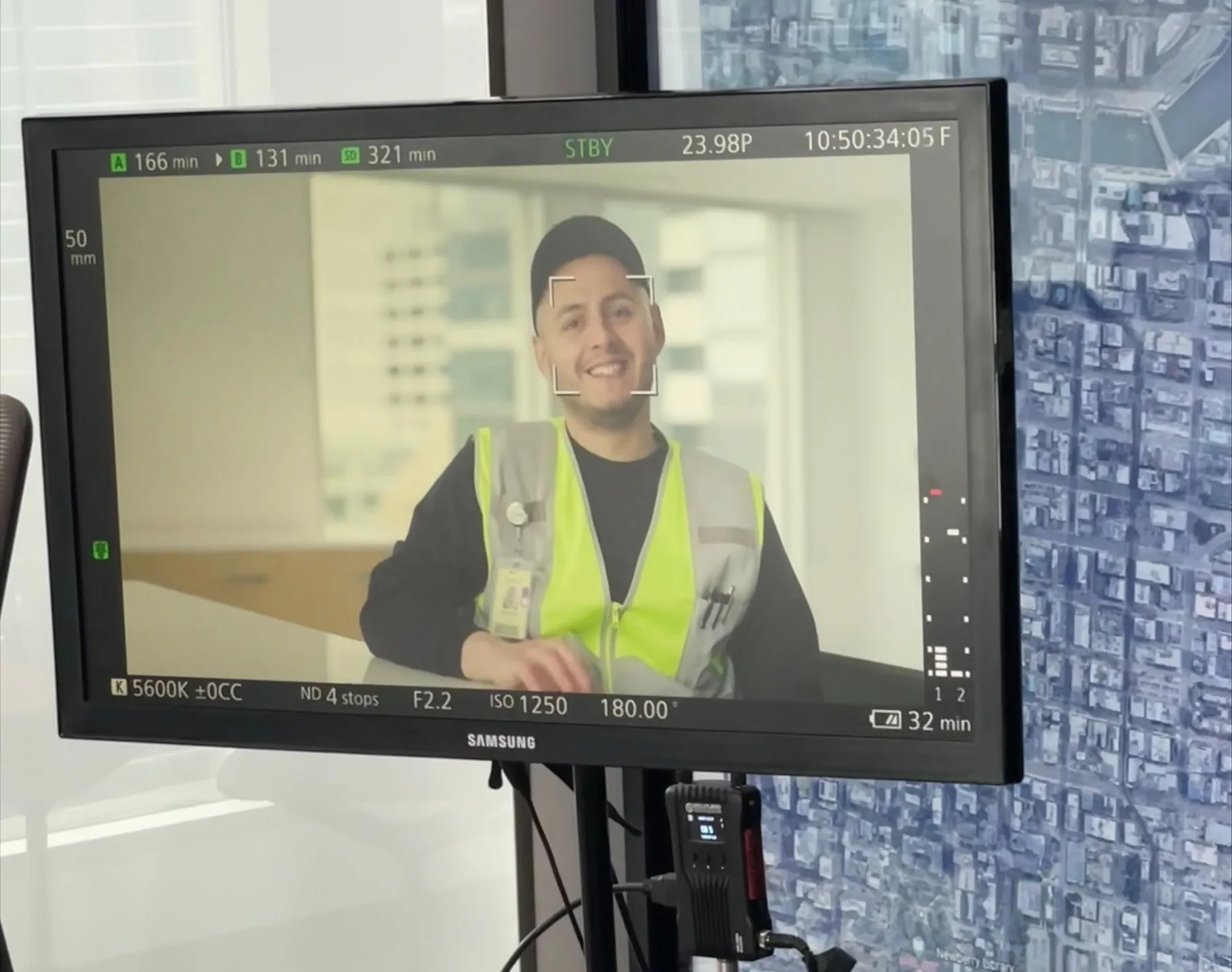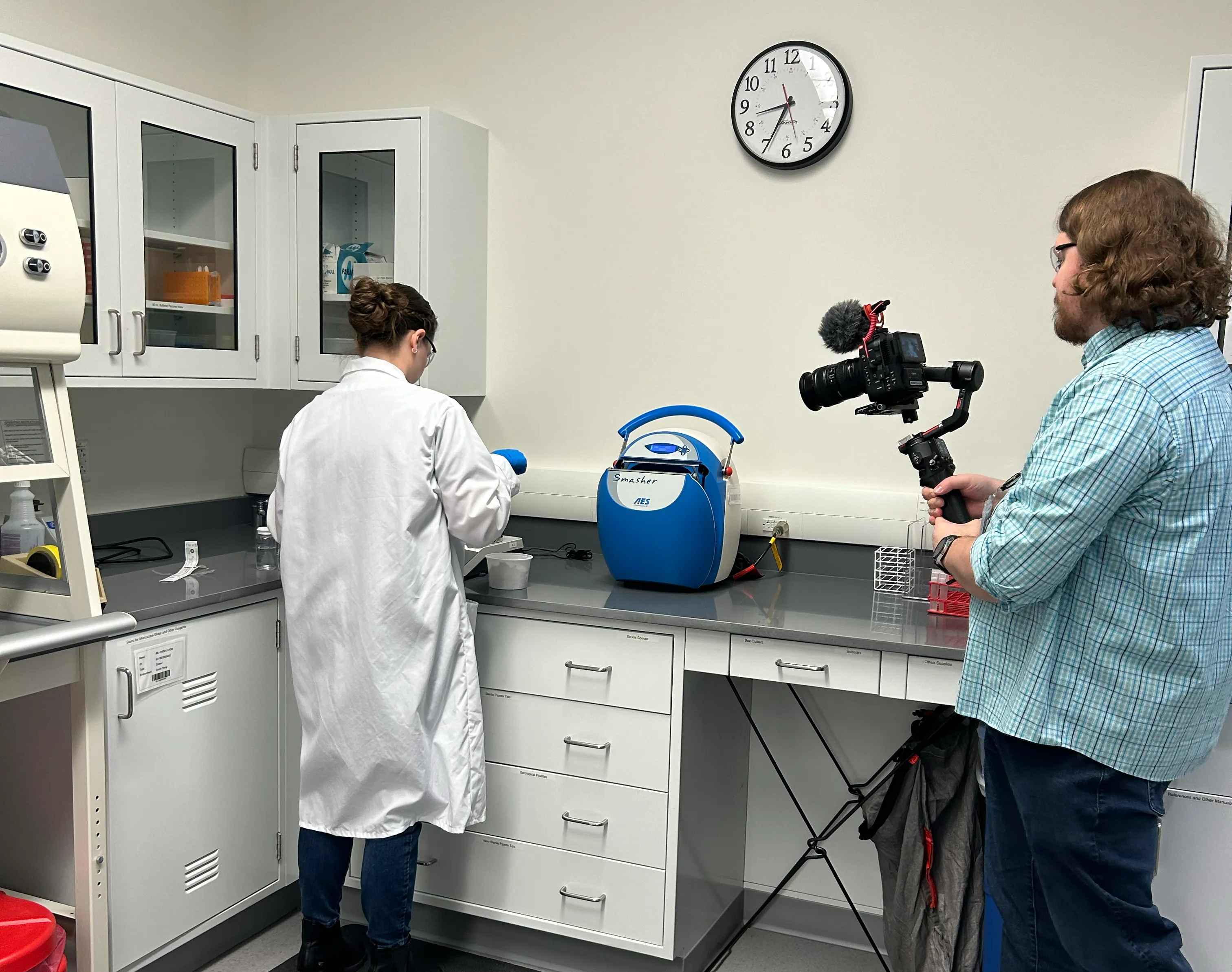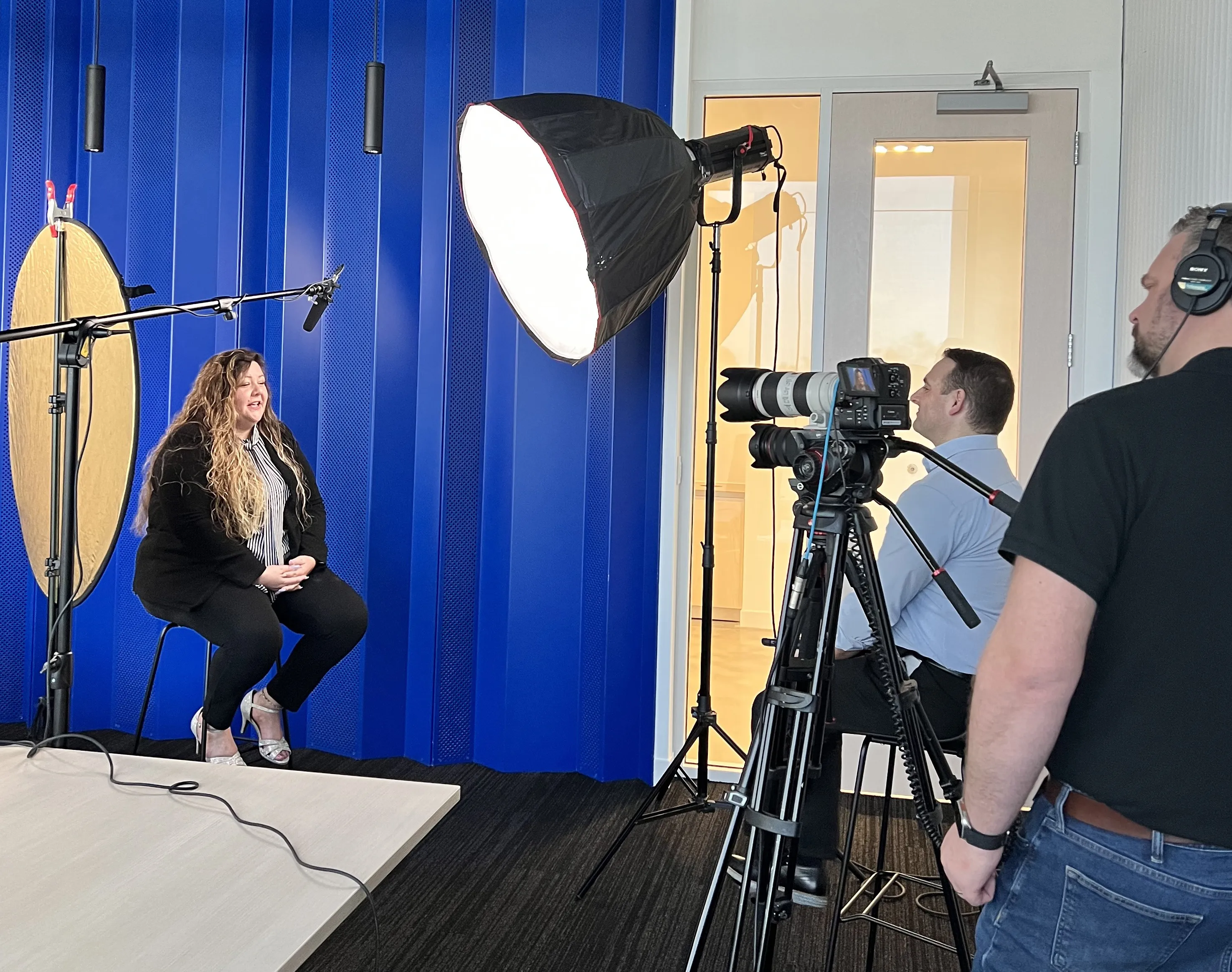Take a moment and think of one of the best movies you’ve watched in the last five years. Got it? Most likely, no matter what movie popped into your head, they relied on green screen effects for at least one scene, if not more. And no, these aren't the obvious green screen effects from decades ago. Today, green screen technology is incredibly sophisticated and accessible, making it all the more common in videos of all kinds.
But how does a green screen work? Great question. One of the best ways to learn about and understand the green screen is to research how it is used in existing movies. You’ll quickly come to realize that green screens have come a long way in recent years. But, are you looking to figure out how to use green screen effects for yourself? We’ve got you covered.
To understand how to use the chroma key green screen, we are sharing all the details on this popular editing today and how to implement it in a video production process. Let’s break it down.
What Is a Chroma Key Green Screen?
Before we get too deep into the weeds, let’s first answer the question of what the chroma key green screen is. As part of this explanation, there are a few terms to understand.
First is the basic term green screen. Technically, this refers to the colored background that you would like to be transparent and removed from a shot. This can be a single-colored backdrop in any color, but typically bright green is used as it is most different from our skin tones.
Next is the chroma key. Chroma key is a term that goes in tandem with a green screen. However, this term refers specifically to the technique of layering two images based on color hues. Every color has a chroma range, which is where the term comes from.
The next term to know is keying. This refers to removing the green screen background during post-production. This is done using video editing software.
And lastly, is the term spill. This term refers to the colored light that reflects on a subject from the green screen.
Types of Green Screen Setups

Now that we understand the terminology of chroma key green screen video productions and editing, it’s time to dive into the different types. When it comes to green screen setups, there are several options professionals rely upon. Here’s more on the best background for the chroma key.
#1. Green Paper Backdrop
A green seamless paper backdrop is used commonly by video creators and photographers, as it is one of the easiest options to set up and is seam and wrinkle-free. If you are filming a video that may get messy, this option is best as the dirty part can easily be cut off and pulled to reveal a clean layer.Typically, this backdrop is found in 1.36 x 10M or 2.7 x 10M sizes.
#2. Green Fabric Muslins
One of the popular reusable green screens is the fabric muslin option. This is an ideal long-term solution for all your video chroma key green screen needs. This option is commonly used by Twitch streamers.This option is favored as it takes up less room than paper rolls, however, it is more likely to crease and takes time to clean if it gets dirty.
#3. Collapsible Backdrop Green Screen
A collapsible backdrop is a go-to for quick setups and convenient storage. This is a great choice for streamers, although it does tend to offer a smaller surface area than other alternatives. So, if you need a green screen for a full-sized video, this is not your best option.
#4. Pullup Backdrop Green Screen

A go-to for many Twitch users are the pull-up backdrop green screen. This is one of the easiest options to set up and put away when used for quick filming needs. With a retractable design, all you have to do is pull it up, as the name suggests, and quickly retract it back into the protective case. It's that easy!
#5. Green Softbox
For more ample coverage for large videos and bigger editing needs, a green softbox is a good alternative. This is particularly useful when looking to meet specific lighting requirements for a video, with the softbox offering the green backdrop across the ground and behind the actor. This can allow photographers to mimic window lighting.
Creating a Chroma Key Footage in 3 Steps
To get the most out of your chroma key setup and achieve the best footage, there are a few steps to follow. For everything on how to use chroma key, follow these three steps below!
#1. Plan Your Green Screen Shot
The first step in chroma key how to is to plan your shot. To start, you must determine the scale of your scene and the best lenses to film it. Navigating this first step relies on knowledge of a lens’s field of view or background plate. As part of this, you must shoot both the foreground and background with the same focal length lens.
Keep in mind, your green screen will need to increase in size as you increase the width of the background shot. Additionally, when prepping actors and objects, be sure to avoid green color! This may go without saying, but if you do use green, it will end up being transparent in the key.
#2. Set Up a Proper Green Screen Lighting

The next step is to ensure you set up the proper lighting. There are three things to look for when navigating lighting, which includes:
- Ensure lighting is even;
- Lighting needs to be soft and diffused;
- The green screen needs to be lit separately from the subject.
When you're lighting a scene with a green screen, it’s essential that the lighting is as even as you can get it. This will help ensure that the green background is even throughout, without any shadows or hot spots that will disrupt the chroma key process during post-production.
Additionally, be sure to light the actors separately. Ideally, the actors and the green screen will have around six feet of separation between them.
Lastly, to avoid harsh light, we recommend using on-light diffusion boxes or setting up large silk frames for more diffused lights. If you are working within a tight budget, a white sheet mounted on a C-stand will do. Furthermore, make sure you are using the same lights on either side of the green screen to ensure consistency. While on bigger productions this may also include overhead lighting; all will need the same degree of diffusion for an even finish.
#3. Edit the Chroma Key Footage
The final step is editing the chroma key footage. As we explained before, chrome key is the process of compositing two images, or video clips, together based on the color. Since, in this case, we are discussing green screens, this involves replacing the green screen with what should truly be behind the actors. The end goal here is to achieve a clean chrome key.
One part of reaching a clean chroma key is preventing spills. This means all edges around the subject are crisp and defined and look natural. Sometimes, with less experienced editors, edges may look jittery or jagged, and color spill from the green screen will show along the edge. This takes away from the green screen effect and needs to be avoided at all costs.
There are many options to key green screens. These days, almost every traditional non-linear editor includes a chroma keyer built-in. Some of this software is free, such as HItFilm Express and DaVinci Resolve. However, those aren't the only options. You can also key using Adobe After Effects, Premiere Pro, and Final Cut Pro X.
Some of this technology is relatively simple, such as with Final Cut Pro X where you add the green screen footage to the timeline, and apply the Keyer effect to it. This system will automatically key out the green screen, which you can then refine to perfection.
In some cases, if there were issues with your background or there’s too much spill, you can make some additional edits to perfect your imagery. For instance, if your green screen had shadows or wrinkles, you can film a shallow depth of field to repair it. Some of these edits will take the experience to get right, but there are plenty of example videos online to assist with your learning process.
Conclusion
To elevate your video production and get creative with your backgrounds, understanding chroma key green screen processes and implementation is a must. With an understanding of how to use the chroma key, you can completely change your video setting, navigating new video topics and mediums for a more innovative portfolio.
Overwhelmed by the chroma key how to? We understand. As the leading Wisconsin videographer company, we are happy to assist with all video needs. We can help you create top-notch videos that you can use for years to come. For more information on our services, contact us today.
Related Posts
Dive deeper into related blog posts and keep expanding your knowledge!
LET'S PRODUCE ACTION.
Are you ready to bring your message to life? Let’s start the conversation about your goals and how Gillespie Productions can help you meet them.




.webp)






